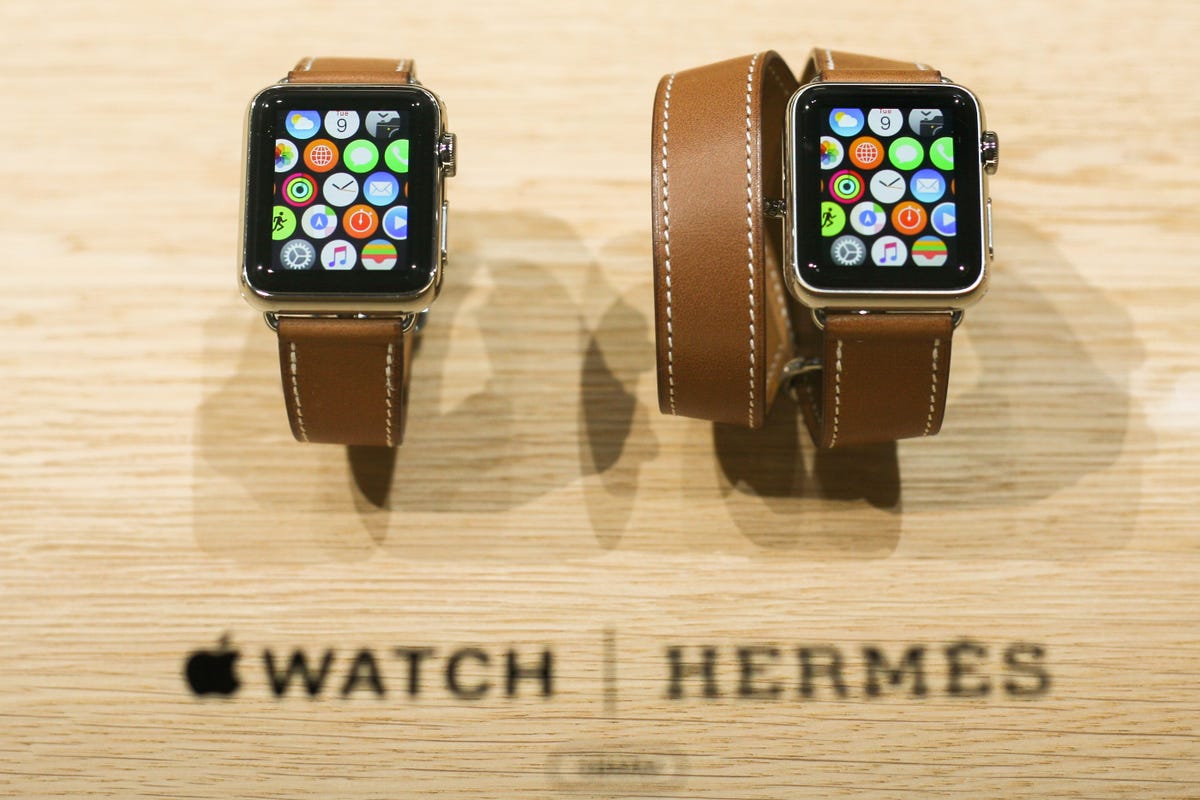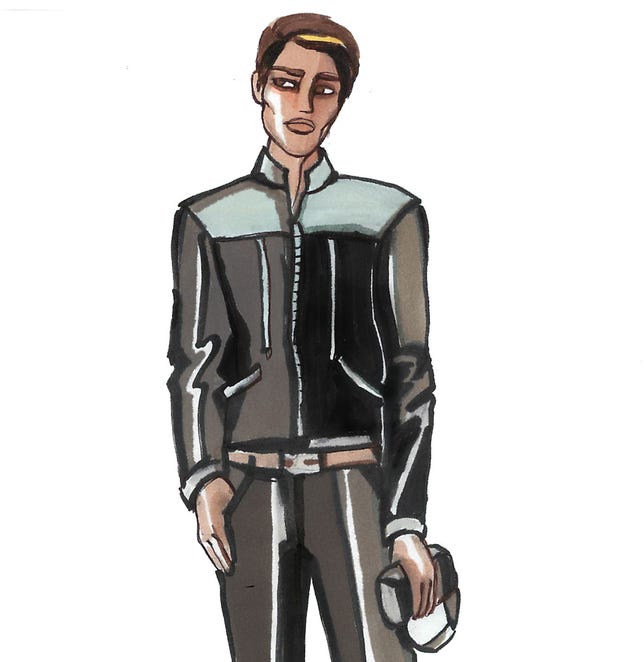This story is part of CES 2016. Our editors bring you complete CES 2016 coverage and scour the showroom floor for the hottest new tech gadgets around.
Have you ever wished you looked more like a stock ticker?
Well, now there’s a smock that lets you scroll a custom message down its front, lit up like a marquee. Then there’s a dress that uses special ink and sensors to change color based on the weather.
Welcome to the brave new world of fashion.
Well, kind of. Those were some of the garments on display earlier this year at FashionWare, a fashion show held every year during the Consumer Electronics Show in Las Vegas. CES 2016 kicks off January 4.
The garments are more concept designs than anything else, but they’re emblematic of the challenge as technology and fashion increasingly and unapologetically collide. Can designers get people to wear tech-infused clothes without them looking like (A) idiots, (B) caricatures of sci-fi characters or (C) both?

 Enlarge Image
Enlarge ImageThis dress from MeU showed up at CES last January. It’s outfitted with an LED installation and an Uno Noteband bracelet, which displays emails, among other things.
Britta Pedersen/dpa/Corbis
“We’re way past spandex,” said Robin Raskin, CEO of Living in Digital Times, the company that is putting on the fashion show for its sixth straight year at CES. Once upon a time, the stretchy material was one of the only tools designers had if they wanted to try out something futuristic. Now the palette is much more plentiful: sensors, LED lights, screens, all woven into garments, watches, rings, headbands and more.
Wearables weren’t always the obvious choice when people wanted to make a fashion statement with personal tech. For almost a decade, that honor has gone to the smartphone, whose metal bodies and glass screens have been the epitome of cool for almost a decade. But that’s begun to change.
Take the iPhone, which was the apex of tech fashion for years but has perhaps become too commonplace. And now that Google’s Android mobile software has gotten good enough to be a decent Apple alternative, other phone makers are getting fashionable too.
Whatever the reason, phones are everywhere, and now that they look roughly the same, they can’t be the fashion symbol they once were.
“You’re starting to see the phone become the thing that’s buried somewhere on you,” said Raskin.


Silicon Valley giants like Apple are increasingly teaming up with high fashion brands like French boutique Hermes.
James Martin/CNET
To fill that void, the fashion world has looked to other things — smart garments like shirts and shoes and fitness bands — to try to inject a dose of cool back into personal tech. Over the past several years, CES has slowly become the de facto showcase.
Fashion has been on the fringes of the trade show in the past, but the distance between the two worlds is shrinking. Compared to last year, the square footage of the wearable tech section at CES has quadrupled to 9,400, according to the Consumer Technology Association. The number of wearables exhibitors has almost tripled to 41, not including the companies that fall into the health and fitness category, like Fitbit. This will also be the first CES since the April release of the Apple Watch, a gateway drug for many into the habit of wearing computer chips.


Designers are pushing for “fashion-first” tech that people wouldn’t mind wearing.
Living in Digital Times
“We’re really trying to push toward fashion-first wearables,” said Amanda Parkes, chief of technology and research for Manufacture New York, a company that helps nurture young fashion startups and also serves as a factory for their products. Translation: Make things that actually look good.
That’s the challenge Silicon Valley’s biggest tech companies are trying to tackle. Google, with its Android Wear software for wearables, has partnered with traditional watchmakers including Tag Heuer and Fossil. Apple has teamed up with high-end boutiques like French luxury brand Hermes to make bands for the Apple Watch. Chipmaker Intel infiltrated New York fashion week in September, teaming up with women’s fashion label Chromat to show off smart bras and dresses. Why? Intel has the technology part down, but “it would be naive to think we were the best fashion designers,” said Steve Holmes, vice president of Intel’s Smart Device Innovation group.
It’s a far cry from when Parkes, an alum of the MIT Media Lab who has been studying wearables since 2002, began her research. “When I came in, everything looked very cyborg,” she said. “The fashion industry didn’t want anything to do with it.”
Now there are bigwig fashion industry executives milling about CES every year, said Raskin. For example, the designer Donna Karan will be speaking at a digital health conference at this year’s show.
This battlefront will be different from what the tech industry has been used to in recent years. Unlike the smartphone wars, one or two companies like Apple and Samsung won’t largely win it all.
Instead, the aim should be for a “diversity of aesthetics,” just as with fashion in general, said Parkes. That means countless designers and manufacturers would be making smart clothes and accessories — something for everyone. “You’d never market the same piece of clothing to a 14-year-old girl and to a 70-year-old man,” she said.
Of course, for the market to really take off, the garments and products need to actually be useful, and not just tech for tech’s sake.
“I’m not trying to create a world where every garment lights up,” Parkes said. “That’s terrifying.”


Now playing:
Watch this:
CES 2016 in two minutes
2:06



